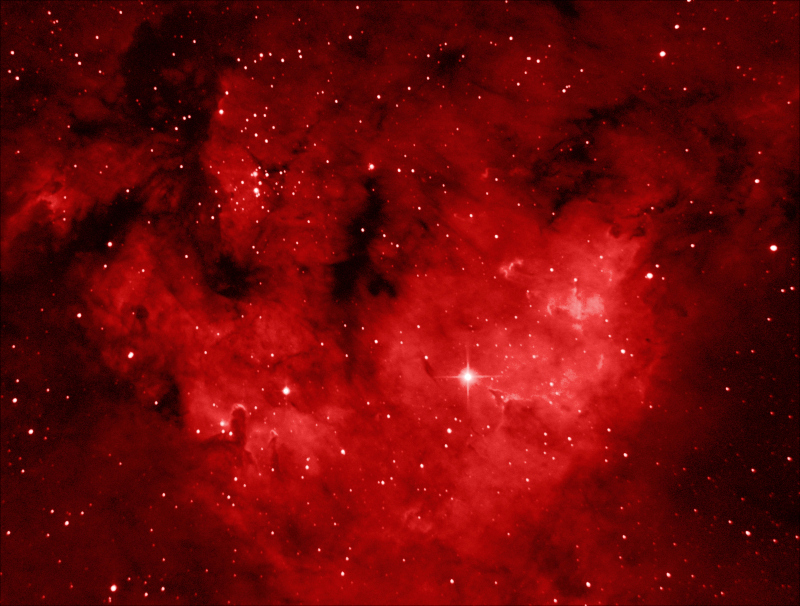Since the start of the year I’ve spent endless hours trying to get the hang of my specialist astrophotography camera – a cooled, monochrome CCD camera capable of long exposures without generating too much noise (an Atik 383L+). It’s a steep learning curve, and I’ve had some good results with the M51 galaxy, which I’m still working on. By far the biggest problem has been keeping the telescope tracking accurately during long exposures. Using a monochrome camera opens up the possibility of narrowband imaging – imaging at the very specific wavelengths commonly emitted by nebula. This type of imaging really does demand long exposures, as the amount of light captured is so little (just one ‘narrow’ portion of the visible spectrum). This is my first serious attempt – emission nebula NGC 7822, some 3,300 light years away in the constellation of Cepheus. So far I have largely captured at the H-Alpha wavelength (656nm), but plan to add SII (Sulphur II) and OIII (Oxygen III) in the future for a tri-colour false colour image. H-Alpha is by far the easiest, as this tends to be emitted quite strongly compared to SII and OIII in particular.
The image so far is composed of 7×30 minute sub-exposures. The camera captures in monochrome, but I have coloured the image red, since H-Alpha lies in the red part of the visible spectrum.
This is my best attempt at a nebula so far. I love the ‘pillars of creation’ that are visible bottom left and bottom right, the star cluster towards the top left, and the dark lanes that permeate the clouds of gas in the top half of the image.


Wow Grae! This is fan-fuffing-tastic!
thanks Lisa!